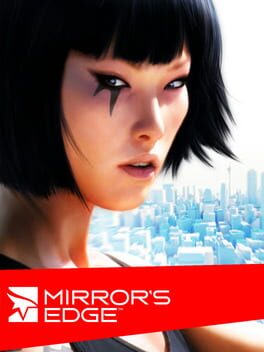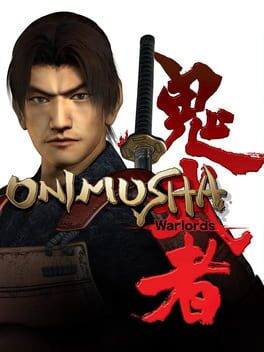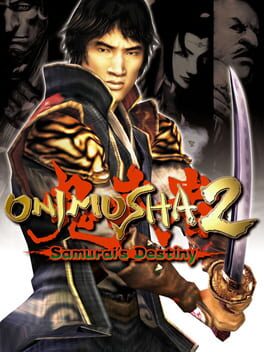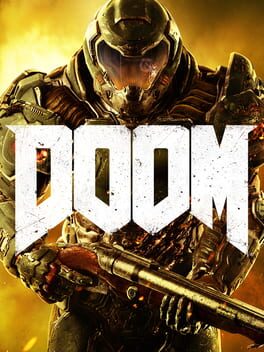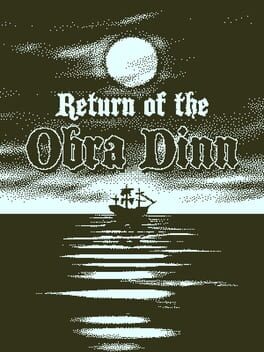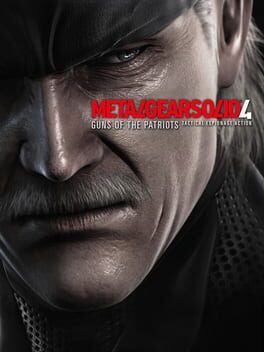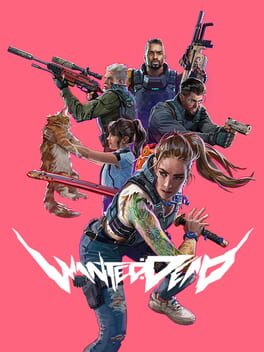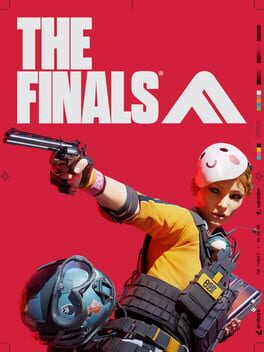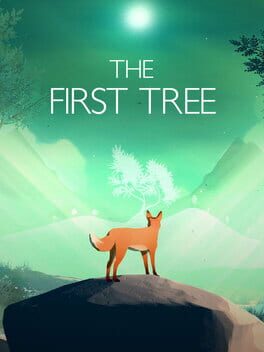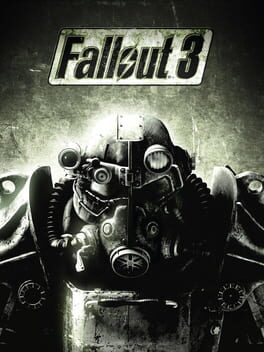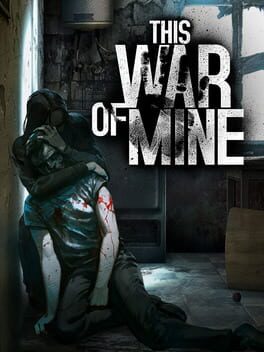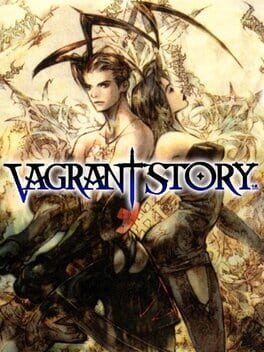2008
It has flaws. Level design lacks saillance, difficulty spikes are a thing, gun mechanics and stealth aren't as deep as they should, controls are meh, cinematics are ugly...
Yet, I mostly remember the good. It is short. It is well paced. It tried something new.
It's a curiosity. A pretty good curiosity. I think time didn't helped it.
Yet, I mostly remember the good. It is short. It is well paced. It tried something new.
It's a curiosity. A pretty good curiosity. I think time didn't helped it.
2001
I was offered a PS2. I went into a game shop. I never heard of Onimusha before. It cost me 2€.
When I launched it, I discovered it was made by Capcom. I was really happy to discover so. When I finished it, I read that Onimusha is the 7th most profitable serie of Capcom. I now know why.
Onimusha comes with a great technology. Capcom decided to create an animation team dedicated to CGI cutscenes (which are great). Thus, CGI would only shine if it would show something interessting. Someone sugested a medieval theme. They went for it.
Now, they had a theme, a clear technological goal... how about making a game ?
In 2001, what does Capcom knows to do ? Survival horror. Let's go on this basis. Unfortunately, Capcom's survivals rely on multiple subleties, one of them being ammo managment. Erf, katana do not need ammunitions. Well, let's put a mana system and reorient the game towards combat action. Let's add a light RPG system and everything will work well. They were right. It works well.
Onimusha is situated between old-fashionned-capcom survival horror games and (for its time) new fashionned beat'em all (see DMC). The adventure is situated in really tiny and kind of oppressing spaces, which can lead to some stress inherent to survival horrors. Thus, most of the time, combats shine. This is due to the variety of opponents you fights and the pseudo-rigidness of your character. Should you either slash enough to make 3 enemies temporaly fall down, which would give you the time to end them on the ground or deal with their comrades, either try to focus the most powerful ones with your magic spells, either run through them taking the risk to be attacked, either take your distances and shoot'em with your bow ? It's up to you, and it's wonderful gameplay-wise. Add on top of this interessting and memorable bosses and you have an intense game experience, set up in a non-commonly seen layout, with imbricated systems that lead to multiples genre and game experiences in a unique software.
When I launched it, I discovered it was made by Capcom. I was really happy to discover so. When I finished it, I read that Onimusha is the 7th most profitable serie of Capcom. I now know why.
Onimusha comes with a great technology. Capcom decided to create an animation team dedicated to CGI cutscenes (which are great). Thus, CGI would only shine if it would show something interessting. Someone sugested a medieval theme. They went for it.
Now, they had a theme, a clear technological goal... how about making a game ?
In 2001, what does Capcom knows to do ? Survival horror. Let's go on this basis. Unfortunately, Capcom's survivals rely on multiple subleties, one of them being ammo managment. Erf, katana do not need ammunitions. Well, let's put a mana system and reorient the game towards combat action. Let's add a light RPG system and everything will work well. They were right. It works well.
Onimusha is situated between old-fashionned-capcom survival horror games and (for its time) new fashionned beat'em all (see DMC). The adventure is situated in really tiny and kind of oppressing spaces, which can lead to some stress inherent to survival horrors. Thus, most of the time, combats shine. This is due to the variety of opponents you fights and the pseudo-rigidness of your character. Should you either slash enough to make 3 enemies temporaly fall down, which would give you the time to end them on the ground or deal with their comrades, either try to focus the most powerful ones with your magic spells, either run through them taking the risk to be attacked, either take your distances and shoot'em with your bow ? It's up to you, and it's wonderful gameplay-wise. Add on top of this interessting and memorable bosses and you have an intense game experience, set up in a non-commonly seen layout, with imbricated systems that lead to multiples genre and game experiences in a unique software.
Onimusha 2 is what you obtain when you have to do the sequel, which imply you have to keep elements from the first game as well as the experienced team whom did it, of a dying genre (at the time) which is the survival horror in a studio that counts a lot on survival horror games to survive.
You obtain a bumpy, rough, bizarre, not enough polished game. Yet, because of many smart decision, a strong theme and a dedicated team, you also obtain a flavourful game.
Onimusha 2 is way less oriented towards horror than its prequel. In opposition, the game is much about action and light RPG decision making. The experience system now includes armor, which means you have to choose between having better weaponery or protection. Weapons use their own mana, yet, every mana bar is incremented simultaneously when you gather mana orbs, which lessened the "ammo managment" aspect of the first game in favor of dynamic weapon switch during fights. The onimusha transformation acts as a joker card, which makes you invincible for a short ammount of time, but is a reward you have to pick or loose at the time it shows up, considering picking it might be very very slow and can make you over vulnerable to enemy attacks.
Rythm and pace are by far the weirdeist aspects of Onimusha 2. Characters, friends or foes, are much more developped, but in a sequential way. First, the game developps its friendly NPCs, then its opponents, then again its NPCs. A money system is introduced : it is unfortunately abandonned after the first third of the adventure. It allows buying better equipment for your friends (whom'll fight with you or under certain circumstances, you'll even controll them) as well as obtaining rewards in exchange of an item. I must confess I really like this system : you never really know who desire what, which is a good transcription of what human relations might be : a giant pile of supositions and guess which eventually lead to a strong friendship. And, as in the real life, people might not be interested in you. For instance, there is a ninja in the game. I spoke to him once. He never showed up again. When the game ends, it shows you how much interaction you had with each character. I had 4% of total interactions possible with him.
The theme is really original. It takes place in the late feudal Japan, but it features biomechanical systems run by both technology and demonic magic. Still, it is very strange to encounter giant aquariums, fans or even a TV in a game of swords and magic. It is strange unless like me, you have a strange feeling you've already been there... Hum...
Ok, let's take a look at my PS2 games... What game did Capcom in the early 2000s?... No! Is it possible? No they wouldn't would they?
Yes they would. They used entire parts of Resident Evil Code Veronica, simply paint over to partly fetch the medieval theme of Onimusha 2. It works, and I'm sure if you didn't played Code Veronica before Onimusha 2, you wouldn't even notice.
But yeah, this added to entire parts of Onimusha 1's castle, added to a global structure in a first time based on force come back to a central hub, which eventually is simply forgotten by the game, added to a pace that has HUGE difficulty spikes Capcom decided to """"fix"""" by giving you, at this precise moment, the opportunity to switch to easy mode (which I did, and honestly considering the amount of bosses situated just one after the other at this point of the game, seems fair to do)... This all, I get it, might feel a lot confusing and might eventually lead to frustration. This is what I liked the most in Onimusha 2 : the game tries a lot of things, sometimes it fails, but it always tries to make its ideas work the best he can, and he uses unpretty tool (like difficulty switch) only as a last resort. IMHO, it is much more interessting, enjoyable and even fair than what can do a modern From Software for instance, which is simply and purely stupidly unfair, difficult, incomprehensible and specially do not even try to make things appealing and/or usable for its player. Onimusha 2 isn't like this. Onimusha 2 is, indeed, strange and bumpy, but at its core, it has a ton of ideas thought around, about, and for the player. This is something I liked, this why I recommand you playing this if you can.
PS : I like Oyu chara design. I am aboslutely unable to explain why. It looks like a chara design from a bad erotic game or that kind of things, featuring suspender belts used to hold "western armors" up (which I am really not sure are actually western) and a shiny hole showing breasts.
Yet I like it. I don't know why. This is disturbing.
You obtain a bumpy, rough, bizarre, not enough polished game. Yet, because of many smart decision, a strong theme and a dedicated team, you also obtain a flavourful game.
Onimusha 2 is way less oriented towards horror than its prequel. In opposition, the game is much about action and light RPG decision making. The experience system now includes armor, which means you have to choose between having better weaponery or protection. Weapons use their own mana, yet, every mana bar is incremented simultaneously when you gather mana orbs, which lessened the "ammo managment" aspect of the first game in favor of dynamic weapon switch during fights. The onimusha transformation acts as a joker card, which makes you invincible for a short ammount of time, but is a reward you have to pick or loose at the time it shows up, considering picking it might be very very slow and can make you over vulnerable to enemy attacks.
Rythm and pace are by far the weirdeist aspects of Onimusha 2. Characters, friends or foes, are much more developped, but in a sequential way. First, the game developps its friendly NPCs, then its opponents, then again its NPCs. A money system is introduced : it is unfortunately abandonned after the first third of the adventure. It allows buying better equipment for your friends (whom'll fight with you or under certain circumstances, you'll even controll them) as well as obtaining rewards in exchange of an item. I must confess I really like this system : you never really know who desire what, which is a good transcription of what human relations might be : a giant pile of supositions and guess which eventually lead to a strong friendship. And, as in the real life, people might not be interested in you. For instance, there is a ninja in the game. I spoke to him once. He never showed up again. When the game ends, it shows you how much interaction you had with each character. I had 4% of total interactions possible with him.
The theme is really original. It takes place in the late feudal Japan, but it features biomechanical systems run by both technology and demonic magic. Still, it is very strange to encounter giant aquariums, fans or even a TV in a game of swords and magic. It is strange unless like me, you have a strange feeling you've already been there... Hum...
Ok, let's take a look at my PS2 games... What game did Capcom in the early 2000s?... No! Is it possible? No they wouldn't would they?
Yes they would. They used entire parts of Resident Evil Code Veronica, simply paint over to partly fetch the medieval theme of Onimusha 2. It works, and I'm sure if you didn't played Code Veronica before Onimusha 2, you wouldn't even notice.
But yeah, this added to entire parts of Onimusha 1's castle, added to a global structure in a first time based on force come back to a central hub, which eventually is simply forgotten by the game, added to a pace that has HUGE difficulty spikes Capcom decided to """"fix"""" by giving you, at this precise moment, the opportunity to switch to easy mode (which I did, and honestly considering the amount of bosses situated just one after the other at this point of the game, seems fair to do)... This all, I get it, might feel a lot confusing and might eventually lead to frustration. This is what I liked the most in Onimusha 2 : the game tries a lot of things, sometimes it fails, but it always tries to make its ideas work the best he can, and he uses unpretty tool (like difficulty switch) only as a last resort. IMHO, it is much more interessting, enjoyable and even fair than what can do a modern From Software for instance, which is simply and purely stupidly unfair, difficult, incomprehensible and specially do not even try to make things appealing and/or usable for its player. Onimusha 2 isn't like this. Onimusha 2 is, indeed, strange and bumpy, but at its core, it has a ton of ideas thought around, about, and for the player. This is something I liked, this why I recommand you playing this if you can.
PS : I like Oyu chara design. I am aboslutely unable to explain why. It looks like a chara design from a bad erotic game or that kind of things, featuring suspender belts used to hold "western armors" up (which I am really not sure are actually western) and a shiny hole showing breasts.
Yet I like it. I don't know why. This is disturbing.
2016
Doing an Whodunit? videogame is I would'nt even think possible. Yet here Obra Dinn is. It is a wondeful game that gave me feelings very few games did. Every game system is sober. This sobriety gives space for the true star of the game : the human brain. Thinking, comparing, looking, moving, hearing are all the tools you'll use to determine who, how, by whom. This is much more stimulating than how it sounds on paper.
The end is sober and suprinsingly satisfying.
The game is gorgeous.
The sound design is wonderful.
This game is a masterpiece.
The end is sober and suprinsingly satisfying.
The game is gorgeous.
The sound design is wonderful.
This game is a masterpiece.
It's the most unliked of the 4. I understand that, I would love to say it is not the baddest but I honnestly don't know. Imho MGS games are unrankable. They all are masterpiece, that tried new thing with every game, renewed the formula and pursued the spirit.
It IS a masterpiece. I mean, I would'nt be able to even find it an absolute flaw, a really messed up thing that doesn't work. It might not be at your taste, of course, but saying an aspect of the game is made in a wrong way that doesn't fulfill a specific goal would be a lie. Even loading screens are thought about in MGS4. I humbly find it highly respectable, and I am happy this author was given a nice budget and a very talented team to create the videogame he wanted.
It IS a masterpiece. I mean, I would'nt be able to even find it an absolute flaw, a really messed up thing that doesn't work. It might not be at your taste, of course, but saying an aspect of the game is made in a wrong way that doesn't fulfill a specific goal would be a lie. Even loading screens are thought about in MGS4. I humbly find it highly respectable, and I am happy this author was given a nice budget and a very talented team to create the videogame he wanted.
2023
Soleil Studios is made of former Team Ninja member. You probably know Team Ninja for Ninja Gaiden and/or Dead or Alive. Their way to do games is the following one : go all in a CQC combat system, mix it up with great chara design, spicy mise en scène, not so good technique and hardecoreness at every level of the game. Honestly, even finishing one of these games is hard. They know it : I unlocked the "Hard japanese" difficulty mode when I finished Wanted Dead.
In my opinion, Team Ninja is misunderstood in the western world. Most people simply see DDDDD breasts and stop it there. But what's behind those breasts is a deep combat system, actually deeper than most combat systems.
You've understood that I like Team Ninja. That's why I follow Soleil's work with attention since its birth. I was offered Valkyrie Elysium by my sister and didn't take the time to play it (my lover finished it and she's fond of action RPGs so I guess it's quite good). Then, my lover offered me Wanted Dead. I didn't want to let it unplayed for long: that's a question of respect at this point.
So I played it. And oh pal what a game! A very controversial one at least. Why is that? Well, it's actually a very good game. But nowaday, people tend to, quite rightly, seriously dislike technical issues. This and difficulty spikes. And old school linear structure. Wanted Dead has all the three of them.
So why do I consider Wanted Dead a good game? Let's have a look at its 3Cs.
- Camera : Nothing special here. Camera is never an issue. The game uses genres standards to counter the camera's weaknesses: it zooms when you look at something and your character automatically choose a target when attacking with your sword, wether or not this target is out of frame.
- Character : A military police lieutenant expert in both gunfights and swordfights.
- Controls : A clever assignation, in which shooting gameplay relies on sticks + circle + triggers + RB and fighting gameplay relies on sticks + LB + cross + square + triangle. Really, the only thing wrong with controls is you pickup items with R3.
That's it. The game is BOTH a TPS and an Hack-n-slash. And none of these aspects are neglected. Now don't get me wrong : the shooting part isn't as good as Gears of War and the hack-n-slash part isn't as good as Bayonetta. But both parts are good, and more important : they're smartly articulated together. For instance : long range enemies are weak to katana whereas CQC enemies are weak to bullets. This leads to a constant high-risk-high-reward decision making, in which you have to choose between charging and exposing yourself to enemy fire or force retreating the best you can to create space between you and the short range enemies.
This high-risk-high-reward mentality of design is applicated to every aspect of the game. Upgrading your weapon is much more about personalizing your weapon. Each thing you buff in a hand leads to another thing nerfed in the other hand: increasing your clip size decreases your reload time. Healing yourself is also a high-risk-high-reward move, considering it slows you hard making you ultra vulnerable, and can be interrupted.
Ammo managment is also high-risk-high-reward based. Basically, you have... Very few clips for both your main weapon and your secondary one. This forces you to switch between your main weapon and the other one, because enemies drop weapons for one or the other, not for both. Considering you can change your secondary weapon for more funky weapons, like greandes launcher or shotguns, considering the higher damages a weapons deals, the less ammo it has, this lead to interessting gunfights, in which switching weapons is common and the order in which you switch weapon is essential.
A parry system similar to the souls' one is implemented. It works very well, provinding you either a low-risk-low-reward permanent protection in the detriment of your speed either a high-risk-high-reward timing parry system. Unfortunately, mastering this system, paired with the counter attack binded on triangle, is necessary (I mean it: NECESSARY) to finish the game. This would not have been an issue if this system was necessary as well to reach the final boss, which it isn't.
Wonderful transition to bosses, characters and narration. In ne word for each of them: unequal, nice and surprising. Bosses are overall interessting, with many patterns and a good variety in their move set and the one you have to assume to deal with them. Some of them even have very clever design, like the rain one, vanishing into invisibility, which lead to a stressful deadly hide and seek game, or Tom Cruise, or should I say Tom CruiseS because there are two of them, which double the patterns you have to watch for and leads to interessting decision making about whom to down first. Unfortunately, there are the second boss and the last one, whom are very harsh difficulty spike, forcing you to learn things you didn't had to learn before (like perfect parrying), and relying and what can be seen as unfair design: insta-kill moves and arenas flooded with henchmen.
Characters rely on objections. Herzog is both popular and upopular, is both an ass and a nice dude. Doc does surgery while being drunk. Cortez is silent, which makes you over attentive to his moves and animation. Gunsmith is -you get it- a gunsmith, but also a former idol fan of cats. Captain lectures you and your team, but eventually asks for a kiss at the end of the meeting to forgive you (the meeting was about how many people you killed and how much it cost). Bad guys are really cool : I talked earlier of the invisible girl and Tom ruise, but Richter and the club owner are wonderful too. Eventually, Hannah, the main character, is a brutal yet soft abandonned mother, very empathic, whilst being a true killing machine, hurt by wars that aren't her's.
All these people are brilliantly mise-en-scène in a Kojima's way. There a huge attention to futile details, like how gelly is their gelly (spoiler: anti-gravity tiers). The switch between art style is wonderful and well-thought: outside the club is realistic, inside it's anime. Shoutout to this level by the way, which is by far the best one featuring the best enemies and level design.
The world and story told are a post-80 pro capitalist society that killed public services and destroyed many lives in its insatiable appetice for profit. Pretty much our world, just a little bit more fascist. Private armies tend to destroy police to conquier this last market. Girls with no family and a kid have no futur: there are no social services to help them. They'll, as shown in a cutscene, marry a douch that'll eventually come home drunk and kill them. Not gonna lie, it can be harsh. This is very nicely constrasted to the colorful sound and visual design, which is based on the 80s culture, quite happy-go-lucky and egocentric.
Wanted Dead isn't a perfect game in any way. But, as the other Team Ninja (in this case, their child Soleil) games, it focuses on things it considers important and delivers a 20/20 game on these things. If you want a well told anticaptilistic game, based on mixed combat system, featuring great sword AND gun fights, Wanted Dead is for you. If you want a game that runs perfectly on a PS4, that has no difficulty spikes nor linear level design, this isn't for you.
In my opinion, Team Ninja is misunderstood in the western world. Most people simply see DDDDD breasts and stop it there. But what's behind those breasts is a deep combat system, actually deeper than most combat systems.
You've understood that I like Team Ninja. That's why I follow Soleil's work with attention since its birth. I was offered Valkyrie Elysium by my sister and didn't take the time to play it (my lover finished it and she's fond of action RPGs so I guess it's quite good). Then, my lover offered me Wanted Dead. I didn't want to let it unplayed for long: that's a question of respect at this point.
So I played it. And oh pal what a game! A very controversial one at least. Why is that? Well, it's actually a very good game. But nowaday, people tend to, quite rightly, seriously dislike technical issues. This and difficulty spikes. And old school linear structure. Wanted Dead has all the three of them.
So why do I consider Wanted Dead a good game? Let's have a look at its 3Cs.
- Camera : Nothing special here. Camera is never an issue. The game uses genres standards to counter the camera's weaknesses: it zooms when you look at something and your character automatically choose a target when attacking with your sword, wether or not this target is out of frame.
- Character : A military police lieutenant expert in both gunfights and swordfights.
- Controls : A clever assignation, in which shooting gameplay relies on sticks + circle + triggers + RB and fighting gameplay relies on sticks + LB + cross + square + triangle. Really, the only thing wrong with controls is you pickup items with R3.
That's it. The game is BOTH a TPS and an Hack-n-slash. And none of these aspects are neglected. Now don't get me wrong : the shooting part isn't as good as Gears of War and the hack-n-slash part isn't as good as Bayonetta. But both parts are good, and more important : they're smartly articulated together. For instance : long range enemies are weak to katana whereas CQC enemies are weak to bullets. This leads to a constant high-risk-high-reward decision making, in which you have to choose between charging and exposing yourself to enemy fire or force retreating the best you can to create space between you and the short range enemies.
This high-risk-high-reward mentality of design is applicated to every aspect of the game. Upgrading your weapon is much more about personalizing your weapon. Each thing you buff in a hand leads to another thing nerfed in the other hand: increasing your clip size decreases your reload time. Healing yourself is also a high-risk-high-reward move, considering it slows you hard making you ultra vulnerable, and can be interrupted.
Ammo managment is also high-risk-high-reward based. Basically, you have... Very few clips for both your main weapon and your secondary one. This forces you to switch between your main weapon and the other one, because enemies drop weapons for one or the other, not for both. Considering you can change your secondary weapon for more funky weapons, like greandes launcher or shotguns, considering the higher damages a weapons deals, the less ammo it has, this lead to interessting gunfights, in which switching weapons is common and the order in which you switch weapon is essential.
A parry system similar to the souls' one is implemented. It works very well, provinding you either a low-risk-low-reward permanent protection in the detriment of your speed either a high-risk-high-reward timing parry system. Unfortunately, mastering this system, paired with the counter attack binded on triangle, is necessary (I mean it: NECESSARY) to finish the game. This would not have been an issue if this system was necessary as well to reach the final boss, which it isn't.
Wonderful transition to bosses, characters and narration. In ne word for each of them: unequal, nice and surprising. Bosses are overall interessting, with many patterns and a good variety in their move set and the one you have to assume to deal with them. Some of them even have very clever design, like the rain one, vanishing into invisibility, which lead to a stressful deadly hide and seek game, or Tom Cruise, or should I say Tom CruiseS because there are two of them, which double the patterns you have to watch for and leads to interessting decision making about whom to down first. Unfortunately, there are the second boss and the last one, whom are very harsh difficulty spike, forcing you to learn things you didn't had to learn before (like perfect parrying), and relying and what can be seen as unfair design: insta-kill moves and arenas flooded with henchmen.
Characters rely on objections. Herzog is both popular and upopular, is both an ass and a nice dude. Doc does surgery while being drunk. Cortez is silent, which makes you over attentive to his moves and animation. Gunsmith is -you get it- a gunsmith, but also a former idol fan of cats. Captain lectures you and your team, but eventually asks for a kiss at the end of the meeting to forgive you (the meeting was about how many people you killed and how much it cost). Bad guys are really cool : I talked earlier of the invisible girl and Tom ruise, but Richter and the club owner are wonderful too. Eventually, Hannah, the main character, is a brutal yet soft abandonned mother, very empathic, whilst being a true killing machine, hurt by wars that aren't her's.
All these people are brilliantly mise-en-scène in a Kojima's way. There a huge attention to futile details, like how gelly is their gelly (spoiler: anti-gravity tiers). The switch between art style is wonderful and well-thought: outside the club is realistic, inside it's anime. Shoutout to this level by the way, which is by far the best one featuring the best enemies and level design.
The world and story told are a post-80 pro capitalist society that killed public services and destroyed many lives in its insatiable appetice for profit. Pretty much our world, just a little bit more fascist. Private armies tend to destroy police to conquier this last market. Girls with no family and a kid have no futur: there are no social services to help them. They'll, as shown in a cutscene, marry a douch that'll eventually come home drunk and kill them. Not gonna lie, it can be harsh. This is very nicely constrasted to the colorful sound and visual design, which is based on the 80s culture, quite happy-go-lucky and egocentric.
Wanted Dead isn't a perfect game in any way. But, as the other Team Ninja (in this case, their child Soleil) games, it focuses on things it considers important and delivers a 20/20 game on these things. If you want a well told anticaptilistic game, based on mixed combat system, featuring great sword AND gun fights, Wanted Dead is for you. If you want a game that runs perfectly on a PS4, that has no difficulty spikes nor linear level design, this isn't for you.
2017
2017 was huge for videogames. Nier automata is one of the reason japan was, is and Will Always be a Land of videogames. It is suprising, it is inspired, it is clever, it is deep, it should be played as much as possible.
Plus, it offers several satisfing game experience depending on how much Time you're willing to spend on it, which is very enjoyable
Plus, it offers several satisfing game experience depending on how much Time you're willing to spend on it, which is very enjoyable
2023
A videogame is a game runned by a digital device and played through an interface.
"Thank you, random dude on the internet, for stating self-evident things like that" you'll say. Fair enough. But have you thought of the implications of such things ? For instance, with a classical game or a toy, like Mikado or Jenga, the game's fun for the precise moment the structure collapses. Then, you have to tidy the game, which is lame.
What I want to demonstrate is a videogame is different from a board game or a toy BECAUSE of its digital essence. Things like destruction, big areas, expensive things, complicated mathematics or even physics laws aren't a problem in videogame.
In The Finals, when you shoot a rocket on wall, it is detroyed. Simple. Square. Clear. Fun. It seems simple, but which game does that ? Battlefield, from which The Finals devs come from. And which other game ? Red Faction. Minecraft. And a few others. Even very famous series or very wealthy AAA produtions most of the time do not feature destruction while featuring explosive devices in their gameplay : you cannot destroy a wall neither in Call of Duty neither in Halo, neither in Gears of War, even if you have rockets, grenades, missiles or even nuclear warheads. Yet, you know what ? Destroying a wall is fun.
This is a universal rule that has and will forever be true in videogame design : destruction itself can make a game because it is a videogame specificity you can only exeperience in an actual videogame. Think of Destruction Derby, which gameplay is simply "Vroom vroom one onto one other until we cannot vroom vroom anymore" : it is still fun nowadays.
On top of this very solid foundations, you simply have to trust your design and feature a little bit of virtuosity in your game and level design. Destroying things is fun, but it is also important thanks to the game's structure, based on timing and coordinated attacks. Destroying things create chaos, which is a great opportunity to create some subsystems to feed this chaos, like a player-class system, a local environmental modifier systems operating through equipement and barrels (which means level design) or a victory condition solely based on timing which leads to silly moves and pretentiousness. All of this relies on solid shooting mechanics served by a "I am forced to mention it because wow"-tiers sound design.
The final is... Clear. Simple. Fun. The only downsides of it are because of it's PvP structure, which comes with a lot of not-so-fun tryhard mindsets, a META oriented playerbase reliying on boring healing mechanics and a two-time based objective loop rewarding only on the very end of the progression while it should reward the first half as well. All in all, very few issues that won't prevent you from having fun. Watch out though, I think the skill of the playerbase is currently skyrocketing and won't stop until a glass-roof is reach, so you better play it right now if you don't want to be obliterated in a few seconds for your 20 first hours.
"Thank you, random dude on the internet, for stating self-evident things like that" you'll say. Fair enough. But have you thought of the implications of such things ? For instance, with a classical game or a toy, like Mikado or Jenga, the game's fun for the precise moment the structure collapses. Then, you have to tidy the game, which is lame.
What I want to demonstrate is a videogame is different from a board game or a toy BECAUSE of its digital essence. Things like destruction, big areas, expensive things, complicated mathematics or even physics laws aren't a problem in videogame.
In The Finals, when you shoot a rocket on wall, it is detroyed. Simple. Square. Clear. Fun. It seems simple, but which game does that ? Battlefield, from which The Finals devs come from. And which other game ? Red Faction. Minecraft. And a few others. Even very famous series or very wealthy AAA produtions most of the time do not feature destruction while featuring explosive devices in their gameplay : you cannot destroy a wall neither in Call of Duty neither in Halo, neither in Gears of War, even if you have rockets, grenades, missiles or even nuclear warheads. Yet, you know what ? Destroying a wall is fun.
This is a universal rule that has and will forever be true in videogame design : destruction itself can make a game because it is a videogame specificity you can only exeperience in an actual videogame. Think of Destruction Derby, which gameplay is simply "Vroom vroom one onto one other until we cannot vroom vroom anymore" : it is still fun nowadays.
On top of this very solid foundations, you simply have to trust your design and feature a little bit of virtuosity in your game and level design. Destroying things is fun, but it is also important thanks to the game's structure, based on timing and coordinated attacks. Destroying things create chaos, which is a great opportunity to create some subsystems to feed this chaos, like a player-class system, a local environmental modifier systems operating through equipement and barrels (which means level design) or a victory condition solely based on timing which leads to silly moves and pretentiousness. All of this relies on solid shooting mechanics served by a "I am forced to mention it because wow"-tiers sound design.
The final is... Clear. Simple. Fun. The only downsides of it are because of it's PvP structure, which comes with a lot of not-so-fun tryhard mindsets, a META oriented playerbase reliying on boring healing mechanics and a two-time based objective loop rewarding only on the very end of the progression while it should reward the first half as well. All in all, very few issues that won't prevent you from having fun. Watch out though, I think the skill of the playerbase is currently skyrocketing and won't stop until a glass-roof is reach, so you better play it right now if you don't want to be obliterated in a few seconds for your 20 first hours.
I think it is the best allegory of what a good adventure game is why it is so hard to do.
It has 3 main gameplay cores, all of which remain on the character controller, essentially moves and navigation. Theses 3 gameplay cores are all solid (like snake). 3D platformer first, relies on a lot of verticality, 3 initials moves (a quick but not high jump, a crouch jump that goes way up and a glider) and some additions spread all along the adventure. Then, an action-combat game, that benefits a lot from the theme : both a clever way to design an health bar, a power up related to this health bar and a final blow system that adds a lot of dynamism by cleverly using the level design. Eventually, a very varied puzzle game relying on very different aspects, even the sound and music design.
On top of these 3 very cool gameplays, Soul Reaver adds :
- A metroid-vania structure based on power ups that open the map. That adds a lot to the level design
- A deep and well treated theme, which has a lot of different layers to its language
- A generous artistical direction, that hits the top in world building, music, dub, graphisms, colors, chara design at a point that it is still interessting nowadays.
That's the catch with adventure games. Beyond necessitating a lot of ideas, mastery and talent, all these elements necessitate a lot of money. Doing an adventure game is expensive, both artistically and monetary speaking, and that might explain why I don't like this genre.
Very few find my favors. On PS1, you can also play the first Spyro games, which are really cool. Medievil deserves to be cited too. More recently, Pumpkin Jack or A Plague Tale:Inocence are worth playing. Unfortunately, i never felt anything for Uncharted or Tomb Raider. I guess it's a matter of tastes.
For your information, french version of this game is... Pretty much above anything. 5 stars cast, 5 stars art direction, 5 star writting. I think it might have not been reached in videogames since.
"Tu te perds dans les méandres de ta morale relativiste, Kain !"
It has 3 main gameplay cores, all of which remain on the character controller, essentially moves and navigation. Theses 3 gameplay cores are all solid (like snake). 3D platformer first, relies on a lot of verticality, 3 initials moves (a quick but not high jump, a crouch jump that goes way up and a glider) and some additions spread all along the adventure. Then, an action-combat game, that benefits a lot from the theme : both a clever way to design an health bar, a power up related to this health bar and a final blow system that adds a lot of dynamism by cleverly using the level design. Eventually, a very varied puzzle game relying on very different aspects, even the sound and music design.
On top of these 3 very cool gameplays, Soul Reaver adds :
- A metroid-vania structure based on power ups that open the map. That adds a lot to the level design
- A deep and well treated theme, which has a lot of different layers to its language
- A generous artistical direction, that hits the top in world building, music, dub, graphisms, colors, chara design at a point that it is still interessting nowadays.
That's the catch with adventure games. Beyond necessitating a lot of ideas, mastery and talent, all these elements necessitate a lot of money. Doing an adventure game is expensive, both artistically and monetary speaking, and that might explain why I don't like this genre.
Very few find my favors. On PS1, you can also play the first Spyro games, which are really cool. Medievil deserves to be cited too. More recently, Pumpkin Jack or A Plague Tale:Inocence are worth playing. Unfortunately, i never felt anything for Uncharted or Tomb Raider. I guess it's a matter of tastes.
For your information, french version of this game is... Pretty much above anything. 5 stars cast, 5 stars art direction, 5 star writting. I think it might have not been reached in videogames since.
"Tu te perds dans les méandres de ta morale relativiste, Kain !"
2017
2022
I rate it 5 stars considering its production (2 people in Hamburg).
It is a great game, a good not-so-retro survival horror.
Warning tho, you have to like cryptik stories, symbolism and not understanding every thing. I guess i'm a little dumb when it comes to video games and culture in general, I must admit I dislike not understanding what is the point of the game. If you like David Lynch or BLAME! go full in tho, it is exactly the same cryptik narration
It is a great game, a good not-so-retro survival horror.
Warning tho, you have to like cryptik stories, symbolism and not understanding every thing. I guess i'm a little dumb when it comes to video games and culture in general, I must admit I dislike not understanding what is the point of the game. If you like David Lynch or BLAME! go full in tho, it is exactly the same cryptik narration
2008
2014
I am happy TWOM exists as a piece of culture. I am not happy it is relevant because war exists. Neither am I I do not consider it a good game.
The point of TWOM is to reproduce a survival experience during a modern day siege. That's why the game is a 2.5D stealth-plateformer-management-visual novel game. You think it's a lot ? It is. Exactly as managing to survive a siege is. That's the genius of TWOM : it shows you how fragile is life by making any aspect of it's design absolutely ruthless and crucial, while letting you incarnate people. And people, as we all know, are normal : they fail to do stuff. They even don't have any ideas on how to do most things. It sounds frustrating ? It is. Especially if it happens on day 20... If you read my logs on the SoulsBorne serie, you probably know I dislike frustration, the lack of infos and hardcoreness. As for myself, I tried the main questline and the oldies radiomen. I failed those two quests and left the game.
You've understand it, TWOM is in my opinion a good idea shaped in a good game, but the idea itself is a bad game idea so I consider the game bad after all. It lets you play civilians stucked in an sieged Sarajevo. You must find way to survive by :
- Organizing your daily tasks...
- To gather stuff : scraps, supplies, ammunitions, money...
- To craft things : weapons, tools, furnitures, fortifications...
- To... I don't know. Eventually wait until the end of the game I guess ? I died before.
Each of your survivors has a talent : this one is a good cooker, this one hits hard, this one is stealthy... You must use them in the most efficient way to survive. Most of the time, in the main questline at least, you'll have one people doing daily things, another one sleeping and the last one going in an expedition to find stuff. As said earlier : every thing is absolutely necessary to your survival. Each mistake is lethal.
When we focus on the part of the game I liked the most (even if I found if kind of boring overall), which is managing your home, we might think at a first glance it isn't as ruthless as I say. But believe me it is. You'll have to build furnitures. To do so, you'll have to build tools in a first place. Every thing is expensive. Each tool gives you access to a limited amount of new furnitures to build. That means that if you craft a useless tool in a first place, you'll certainly die. Slowly but certainly. That also means that if you craft a bad furniture you'll die, because it used ressources necessary to do other things. For instance, what's the point of the radio ? What's the point, in the early game, of a heat source ? If like me, you constructed both in the first days, you'll regret it and you better restart.
The dialog + inventory + barter system is very good though. Items are stackable to a limit (which depends of the item we're talking about) in an inventory case. Tools and/or weapons also take an inventory case. When you see someone, you can either fight him, either talk to him, either avoid him. If you talk to him, you'll sometime have to trade items with him. Each item has an hidden cost that seems to depend on what the people you talk to needs more : if he's ill, he'll consider medicine a wealthy item for instance. There are even specific items like vodka or cigarets that are really powerful in a barter situation but near useless in the rest of the game. Inventory space is also a real thing : if you decide to go to the main square to see merchants, you'll have to seriously consider what you take with you, because it must be the most valuable for those merchant as well as taking the least space in your inventory to let you take what you want from them.
Eventually, I must talk about stealth and fight system, which is where the whole game collapse in my opinion. The other systems hide a lot of infos (where's the most valuable place to put a reservoir, how much worth is a fake cigaret made of grass... ?) but they are not based on timing and sometimes are not that ruthless. The stealth-combat system is, on the other hand, based on timing and is absolutely ruthless when it comes to gunfire.
Basically, you point n clic things. When you do so, your character goes in position to execute the task. If you clic once, he does it slowly and without making noise. If you clic twice, he does it fast in a noisy way. Noise alerts enemies. Enemies have guns. They shoot at you. You die. The game doesn't features saves. That's the first scenario.
The second scenario is they shoot and eventually hit you, but you manage to survive. Congratulations, you're now wounded, and you'll die of stravation/illness because your two other surivors cannot handle the daily task on their own and they'll eventually get ill or seriously exhausted. And you'll die.
The third scenario is you didn't made an noise so they didn't shoot at you. Unfortunately, the game forces you to go further and thurther in your explorations. You'll eventually end in a very dangerous area, full of armed soldiers you'll have to face. Now, you have to solutions : either play the worst game possible by hiding and waiting a looooooooooong time in dark holes for guards to pass, either you try, on day 30, to attack a guard. Unfortunately, there was no tutorials for that. You don't know how to do so. You finally approach the guard and try to neutralize him. You clic on him. Wrong call. I guess you should have clicked on the icon upon him, with the knife in your hand. He saws you. He shoots you. See scenario 1 or 2.
Again, that's logical. If I was stucked in a sieged city, I myself wouldn't know how to disarm/kill/stun a military aswell. This is the better "You are a civilian stucked in a war" game experience. But that game experience isn't something I actually want to experience. Nonetheless, I am really happy some game devs took the time to think about that experience and eventually delivered a game that made a lot of people think. A game that recenters the debate about war in videogames : war is a tragedy. Nothing less, nothing more. This is something important to tell, and TWOM tells it correctly.
So does the metal gear solid serie in a way better way in my opinion but that's not the topic there. TWOM is a good game with a good message. But I hated it's frustrating and ruthless game design.
The point of TWOM is to reproduce a survival experience during a modern day siege. That's why the game is a 2.5D stealth-plateformer-management-visual novel game. You think it's a lot ? It is. Exactly as managing to survive a siege is. That's the genius of TWOM : it shows you how fragile is life by making any aspect of it's design absolutely ruthless and crucial, while letting you incarnate people. And people, as we all know, are normal : they fail to do stuff. They even don't have any ideas on how to do most things. It sounds frustrating ? It is. Especially if it happens on day 20... If you read my logs on the SoulsBorne serie, you probably know I dislike frustration, the lack of infos and hardcoreness. As for myself, I tried the main questline and the oldies radiomen. I failed those two quests and left the game.
You've understand it, TWOM is in my opinion a good idea shaped in a good game, but the idea itself is a bad game idea so I consider the game bad after all. It lets you play civilians stucked in an sieged Sarajevo. You must find way to survive by :
- Organizing your daily tasks...
- To gather stuff : scraps, supplies, ammunitions, money...
- To craft things : weapons, tools, furnitures, fortifications...
- To... I don't know. Eventually wait until the end of the game I guess ? I died before.
Each of your survivors has a talent : this one is a good cooker, this one hits hard, this one is stealthy... You must use them in the most efficient way to survive. Most of the time, in the main questline at least, you'll have one people doing daily things, another one sleeping and the last one going in an expedition to find stuff. As said earlier : every thing is absolutely necessary to your survival. Each mistake is lethal.
When we focus on the part of the game I liked the most (even if I found if kind of boring overall), which is managing your home, we might think at a first glance it isn't as ruthless as I say. But believe me it is. You'll have to build furnitures. To do so, you'll have to build tools in a first place. Every thing is expensive. Each tool gives you access to a limited amount of new furnitures to build. That means that if you craft a useless tool in a first place, you'll certainly die. Slowly but certainly. That also means that if you craft a bad furniture you'll die, because it used ressources necessary to do other things. For instance, what's the point of the radio ? What's the point, in the early game, of a heat source ? If like me, you constructed both in the first days, you'll regret it and you better restart.
The dialog + inventory + barter system is very good though. Items are stackable to a limit (which depends of the item we're talking about) in an inventory case. Tools and/or weapons also take an inventory case. When you see someone, you can either fight him, either talk to him, either avoid him. If you talk to him, you'll sometime have to trade items with him. Each item has an hidden cost that seems to depend on what the people you talk to needs more : if he's ill, he'll consider medicine a wealthy item for instance. There are even specific items like vodka or cigarets that are really powerful in a barter situation but near useless in the rest of the game. Inventory space is also a real thing : if you decide to go to the main square to see merchants, you'll have to seriously consider what you take with you, because it must be the most valuable for those merchant as well as taking the least space in your inventory to let you take what you want from them.
Eventually, I must talk about stealth and fight system, which is where the whole game collapse in my opinion. The other systems hide a lot of infos (where's the most valuable place to put a reservoir, how much worth is a fake cigaret made of grass... ?) but they are not based on timing and sometimes are not that ruthless. The stealth-combat system is, on the other hand, based on timing and is absolutely ruthless when it comes to gunfire.
Basically, you point n clic things. When you do so, your character goes in position to execute the task. If you clic once, he does it slowly and without making noise. If you clic twice, he does it fast in a noisy way. Noise alerts enemies. Enemies have guns. They shoot at you. You die. The game doesn't features saves. That's the first scenario.
The second scenario is they shoot and eventually hit you, but you manage to survive. Congratulations, you're now wounded, and you'll die of stravation/illness because your two other surivors cannot handle the daily task on their own and they'll eventually get ill or seriously exhausted. And you'll die.
The third scenario is you didn't made an noise so they didn't shoot at you. Unfortunately, the game forces you to go further and thurther in your explorations. You'll eventually end in a very dangerous area, full of armed soldiers you'll have to face. Now, you have to solutions : either play the worst game possible by hiding and waiting a looooooooooong time in dark holes for guards to pass, either you try, on day 30, to attack a guard. Unfortunately, there was no tutorials for that. You don't know how to do so. You finally approach the guard and try to neutralize him. You clic on him. Wrong call. I guess you should have clicked on the icon upon him, with the knife in your hand. He saws you. He shoots you. See scenario 1 or 2.
Again, that's logical. If I was stucked in a sieged city, I myself wouldn't know how to disarm/kill/stun a military aswell. This is the better "You are a civilian stucked in a war" game experience. But that game experience isn't something I actually want to experience. Nonetheless, I am really happy some game devs took the time to think about that experience and eventually delivered a game that made a lot of people think. A game that recenters the debate about war in videogames : war is a tragedy. Nothing less, nothing more. This is something important to tell, and TWOM tells it correctly.
So does the metal gear solid serie in a way better way in my opinion but that's not the topic there. TWOM is a good game with a good message. But I hated it's frustrating and ruthless game design.
2000
This is a bitter sour 4 star rating. But a true 4 star rating anyway.
First thing : the game might be the most beautiful game of the PS1. You can move your camera on your own to see hidden places, and believe me it's worth it considering how everything have a little detail on it that make it lovely to look at.
Second thing : This might be one of the best combat system of any RPG. There are a lot of detail to watch for, as for the player is implicated in each fights with a lot of human input required. Below is a list of details that make this system brilliant in my eyes.
- You have to aim your shots to touch specific parts of your enemy. OFC, a dragon doesn't have the same parts as a ghost or a human. If you wound this part enough, your enemy gains a malus depending on which part is hurt : silence for the head, slow movements for the legs...
- Each enemy IS actually something. This something is weak to a specific type of damage (skeltons dont like blunt damages) and a specific type of weapon specialty (skeltons are weak to anti-undead weapons).
- Each action has a range depending on which weapon you use. Do not hope to hit the tail of a dragon facing you with a dagger. But you can do so with an arbalest.
- Enemy chara design is wonderful. If it's blue and use water magic, then it's weak to fire. If it's white, then it's certainly made either of stone either of bones, which means it's weak to blunt damages.
- A ton of gauges to fill or unfill. Each weapon have a gauge of efficiency you want to fill and a gauge of durability you don't want to unfill. If a fight is long, you'll certainly fill your risk gauge, which increases your crits chances, but lessen your precision.
- A craft system which allow to fusion two weapons to obtain a new one of a new nature.
- A rythm system. You have to hit buttons exactly when you hit your enemy to deal another blow. This blow has an effect depending on which button you pressed : it deals more damages, it fills the weapon efficiency gauge, it deals poison to your target...
- A very good pace. I never had to farm to progress but advancing on the adventure wasn't easy in any way : a lot of bosses made my day a tough one.
That's why this game is a 5 stars. That's why I recommend you play it if you like RPGs (which I don't). But as every game, Vagrant has flaws, and that's what made me abandon it.
I am french and played it on my PS1. This might be a detail but believe me it isn't. French electricity network is PAL, and not NTSC as USA or Japan one. PAL is 50Hz, which means every PS1 game is 1/6 slower in France than it is in the USA or in Japan. Vagrant Story is japanese. In my opinion this explains why everything is that slow. It might be bearable to spend that hell of time in spell casting animation and/or menuing in normal speed, but it is absolutely unbearable in 50Hz.
That really is the only complain I have about this game. Everything is slow, plus the menus are... Simply horrible. Equiping items isn't in the same place as observing items, each part of your body (2 hands, 1 head, 1 body, 1 leg, 1 necklace...) has to be changed individually through dedicated sub-menus. If you change your equipment in fight (which you have to do considering the weaknesses system) while a spell is cast on you, it is sometimes uncast and you have to cast it again, spending mana points... In short : it is awful. Oh, and there are "boxes you must push" puzzles which are great, but way too complicated for this type of game.
But here again, I don't like RPG. Maybe if it's your type of game you'll enjoy that kind of details I found horrible. That being said, I must point out as a reminder this game gave me unforgettable memories. Like this time I put my mace in a chest and encountered a Stone Golem with only a dagger to fight him which led to... A stupid fight in which I dealt him 2 damages in case of critical hits. Or this time the chara design of a boss was so good I instantly knew what to equip, which buff to cast and which part of him to attack to... Actually one shot him. Thoses kind of moments, to be honest, I only ever lived them playing Vagrant. This deserves to be noted.
To be quick on the narration: It's good. Not wondeful, because it lacks voices and musics. But good, because some dialogs are well written and lead to interesting thoughts on death, religion, power and madness. For instance, I liked how they justified why an undead always want to attack the livings. Because he simply is terrified of being alone, and wants his living firends to join him to enjoy their moment together, which imply killing them because they currently see him as a monster. This is actually smart.
In conclusion, I think you better play it on a PSP. Because it is portable, which allows smaller and fragmented gaming sessions, which is always good when it comes to RPG. Plus, certain details might have been corrected and the console is certainly a bit quicker in France thanks to some technical tweaks.
First thing : the game might be the most beautiful game of the PS1. You can move your camera on your own to see hidden places, and believe me it's worth it considering how everything have a little detail on it that make it lovely to look at.
Second thing : This might be one of the best combat system of any RPG. There are a lot of detail to watch for, as for the player is implicated in each fights with a lot of human input required. Below is a list of details that make this system brilliant in my eyes.
- You have to aim your shots to touch specific parts of your enemy. OFC, a dragon doesn't have the same parts as a ghost or a human. If you wound this part enough, your enemy gains a malus depending on which part is hurt : silence for the head, slow movements for the legs...
- Each enemy IS actually something. This something is weak to a specific type of damage (skeltons dont like blunt damages) and a specific type of weapon specialty (skeltons are weak to anti-undead weapons).
- Each action has a range depending on which weapon you use. Do not hope to hit the tail of a dragon facing you with a dagger. But you can do so with an arbalest.
- Enemy chara design is wonderful. If it's blue and use water magic, then it's weak to fire. If it's white, then it's certainly made either of stone either of bones, which means it's weak to blunt damages.
- A ton of gauges to fill or unfill. Each weapon have a gauge of efficiency you want to fill and a gauge of durability you don't want to unfill. If a fight is long, you'll certainly fill your risk gauge, which increases your crits chances, but lessen your precision.
- A craft system which allow to fusion two weapons to obtain a new one of a new nature.
- A rythm system. You have to hit buttons exactly when you hit your enemy to deal another blow. This blow has an effect depending on which button you pressed : it deals more damages, it fills the weapon efficiency gauge, it deals poison to your target...
- A very good pace. I never had to farm to progress but advancing on the adventure wasn't easy in any way : a lot of bosses made my day a tough one.
That's why this game is a 5 stars. That's why I recommend you play it if you like RPGs (which I don't). But as every game, Vagrant has flaws, and that's what made me abandon it.
I am french and played it on my PS1. This might be a detail but believe me it isn't. French electricity network is PAL, and not NTSC as USA or Japan one. PAL is 50Hz, which means every PS1 game is 1/6 slower in France than it is in the USA or in Japan. Vagrant Story is japanese. In my opinion this explains why everything is that slow. It might be bearable to spend that hell of time in spell casting animation and/or menuing in normal speed, but it is absolutely unbearable in 50Hz.
That really is the only complain I have about this game. Everything is slow, plus the menus are... Simply horrible. Equiping items isn't in the same place as observing items, each part of your body (2 hands, 1 head, 1 body, 1 leg, 1 necklace...) has to be changed individually through dedicated sub-menus. If you change your equipment in fight (which you have to do considering the weaknesses system) while a spell is cast on you, it is sometimes uncast and you have to cast it again, spending mana points... In short : it is awful. Oh, and there are "boxes you must push" puzzles which are great, but way too complicated for this type of game.
But here again, I don't like RPG. Maybe if it's your type of game you'll enjoy that kind of details I found horrible. That being said, I must point out as a reminder this game gave me unforgettable memories. Like this time I put my mace in a chest and encountered a Stone Golem with only a dagger to fight him which led to... A stupid fight in which I dealt him 2 damages in case of critical hits. Or this time the chara design of a boss was so good I instantly knew what to equip, which buff to cast and which part of him to attack to... Actually one shot him. Thoses kind of moments, to be honest, I only ever lived them playing Vagrant. This deserves to be noted.
To be quick on the narration: It's good. Not wondeful, because it lacks voices and musics. But good, because some dialogs are well written and lead to interesting thoughts on death, religion, power and madness. For instance, I liked how they justified why an undead always want to attack the livings. Because he simply is terrified of being alone, and wants his living firends to join him to enjoy their moment together, which imply killing them because they currently see him as a monster. This is actually smart.
In conclusion, I think you better play it on a PSP. Because it is portable, which allows smaller and fragmented gaming sessions, which is always good when it comes to RPG. Plus, certain details might have been corrected and the console is certainly a bit quicker in France thanks to some technical tweaks.
